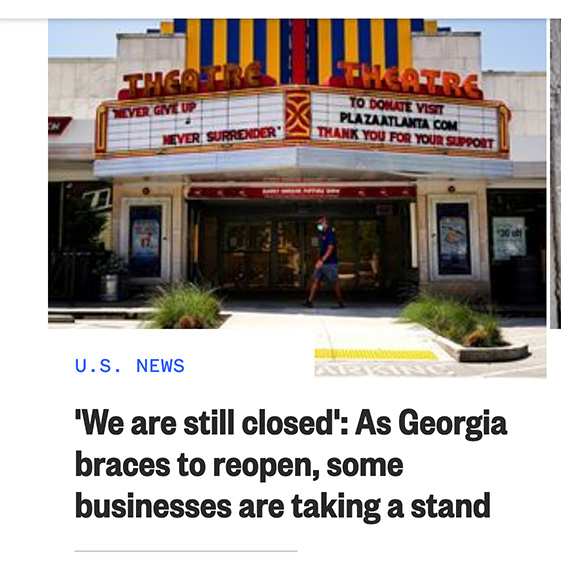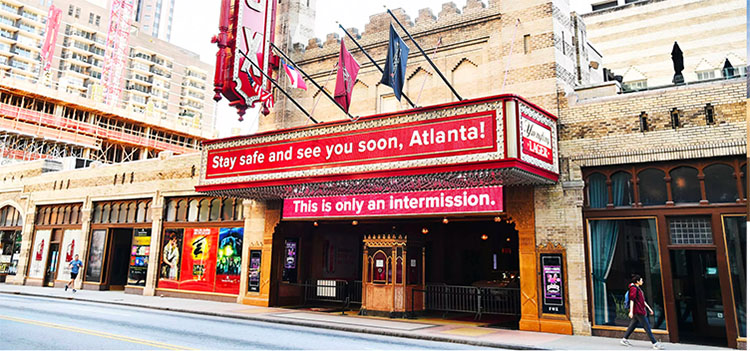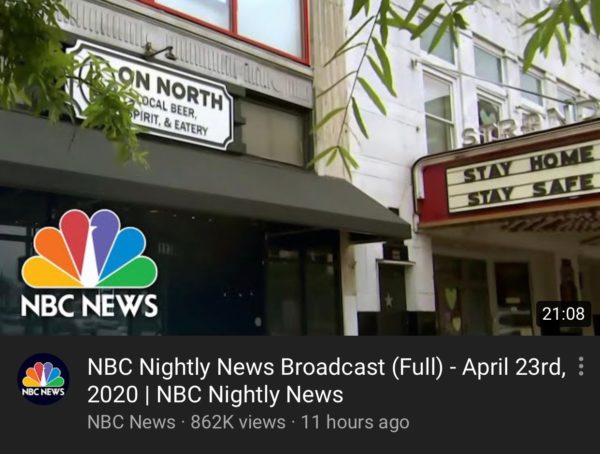Capacity Interactive’s Erik Gensler scored a podcast interview with Seth Godin to discuss what the post-Covid-19 future for the arts might look like. There is a transcript of the interview available if you would rather consume the content in that way.
I always wondered why so many of Godin’s blog posts had resonance with arts and culture. I was unaware that Godin’s father worked for the Studio Arena Theatre and his mother was on the board of the Albright-Knox Museum, both in Buffalo, NY.
He says what will be valuable as we emerge into the next normal after Covid-19 concerns abate will largely still be what is valuable now – connection, scarcity and the sense of being an insider that comes from scarcity. He doesn’t feel digitizing the great art of the world and putting it online has sufficient value for people. The ratio of people who line up to take a selfie with the Mona Lisa far outweighs the number of people who look at the Mona Lisa online. Even though a huge number of people have shuffled past the Mona Lisa at the Louvre and the experience isn’t scarce in terms of absolute numbers, having a selfie provides the “here I am, and your not” sense of being an insider.
Godin takes on the common claim cultural organizations make that their audience is “everybody” rather than having a sense of who your content is for. He says that basically to sell out, you only need to attract about 1% of the population in your community. (Given the population of NYC, that number approaches zero.)
So, if all you need is one percent, what that means is, you would benefit by actively ignoring what 99% of the people say they want. Do not compromise anything for them because if you compromise something for them, the ones who weren’t going to come anyway, the ones who might’ve come aren’t going to come, either. And this is the myth of the Broadway show with a TV star in it because the Broadway producer says, “I don’t have a TV star; I can’t get people to come to my show,” but when you do the math—and I’ve seen the report—more than half the people at a Broadway show on any given night go to several Broadway shows a year, maybe 10. So, you’re not actually trying to get someone who is so unaware that they’re only willing to come if it’s a TV star. You’re trying to get someone who’s going to come because it’s good
Initially I was a little concerned that his injunction against compromising anything was a rejection of the necessity to change experiences and add program variety, but pretty soon it was clear he was against any sort of explicit or implicit message that people did not belong or weren’t welcomed.
Godin used the example of a Harley-Davidson motorcycle. He said if the company was smart, they would never pay for an ad Gensler would see because he isn’t their target audience. The one thing Harley-Davidson knows is that ads don’t sell their bikes, Harley riders do. The riders insist their friends join them.
Godin says the art is the marketing. Marketing isn’t happens after the art is created. When the Harley rider is inviting others to participate in something they value, there is no distinction between the product and the marketing.
While not everything can be promoted successfully by word of mouth, Godin is basically criticizing the practice of putting marketing and fundraising in distinct silos, divorced from the creative process.
Of course, the product consumed isn’t the art, it is the whole experience. Which is why there is such a push to events using more images of audiences enjoying an experience with family and friends rather than performers posing artfully with props or musical instruments.
This is the part of the podcast Gensler and Godin started talking about some really great ideas that have been implemented.
Gensler talks about how the Cleveland Orchestra creates connections with first time attendees:
…when someone is a first-time visitor to see a concert, they will send someone over to the seat with a box full of goodies and let them choose some branded merchandise and say, “Thank you for coming. I hope you enjoy the concert.” They did research and found that those people that get that experience of being seen are three times more likely to come back in six months than the people who didn’t get that experience,
Godin uses the example of the Museum of Modern Art which allows members to bring guests in an hour before the museum opens. He asked if there was a limit and was told no, so he brought 80 people and gave them a personal tour of the museum. He said the staff clearly were not prepared for this, but that the museum should be encouraging this sort of thing.
“And the question is, why isn’t this a feature? Why is it a bug that creating a way for members to act like big shots if they bring groups with them is what we’re talking about here. That is handing your biggest fans a megaphone. How can you make it easy for them to do that and impossible for anyone else to do it because it’s the scarcity that creates the value, right?”
Godin suggested something that hadn’t be implemented anywhere that could be used in connection with live performance.
“…what happens if, after a live performance, everybody in the room—remember they all have cell phones; they’re all waiting for their car at the parking garage or on the way home—gets an email and it says, “We’re doing an after show talk just for you. Two of the actors are in the dressing room, taking their makeup off. Click here to see it,” and live 30, 40, 100 people tune in and they’re commenting on what went right and what went wrong that night on stage, letting us feel like something magical actually happened, something live. It opens the door to the next thing. It gives us one more thing to talk about.”
Gensler said that a lesson they learned at Capacity Interactive was that people have much more potential to influence participation by others after they have purchased tickets. He said they used to stop showing people ads once they made a purchase, but realized that was a bit shortsighted because people can become more engaged after they have made the decision to participate and once they have attended, are ready to be enthusiastic recommenders. So they provided more content to people who have seen the show in the hope they would put their stamp of approval on the event by forwarding on to others.
There’s one campaign we did where the content from after they saw the event was nine times higher than any of the content we show them before and it’s that exact reason, because they’re passionate. And the crazy thing is, we thought our metric for that kind of campaign was getting people to share it and we’re like, “Oh, wow, hundreds of people are sharing this. This is great.” But we didn’t expect was the amount of money that those posts make. Certain campaigns will … those will sell way more tickets.
As text and quote heavy as this post has been, there is a lot of their conversation I skipped over. Give it a listen/read as there is likely to be something in there that will inspire you.





Thanks for what you are doing to bring cultural change to the arts. It is so important to represent everyone.…